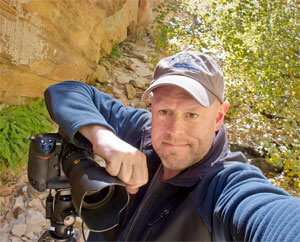Despite knowing little about photography at the time, I knew I was destined to make my living as a photographer when I received my first camera, a Canon Canonet QL17 GIII, as a high school graduation present. The entire process mesmerized me. I was hooked. However, a prior enlistment in the U.S. Army Infantry, which began shortly afterwards, put that dream on the back burner for a few years.
Following my discharge, I enrolled in the Photographic Engineering Technology program at St. Cloud State University, thinking it a solid career backup plan should my dream of being a photographer be unrealized. The technically-focused program provided me with a solid background in photographic science, chemistry, processes and sensitometry.
While at the university, I began working at the school paper, which was followed by a photojournalism position at the St. Cloud Times and, subsequently, jobs at newspapers in Pennsylvania and finally North Dakota, where I was part of a four-person staff named as finalists for the 1998 Pulitzer Prize for Spot News Photography. In 2000, I left the erratic schedule of photojournalism to the more predictable hours as the staff photographer at the University of North Dakota, where I remained for the next 10 years.
In 2010 I followed my wife, a New York City native, to her new job in the least populated state in the U.S., Wyoming, where I now work as an educational and commercial freelance photographer.
Throughout the years working as a photographer for others, I spent a great deal of my free time doing personal work for myself. These images, which were infinitely more important to me that the work images, were primarily landscapes. However, I have never considered myself a nature photographer. Instead, I tend to gravitate towards those areas which are influenced by both man and nature.
Despite having embraced the digital medium, I consider myself a landscape photographer in the traditional sense of the word. My style is straightforward and formal, with a deep depth-of-field and an unabashed honesty to the subject matter, and is in direct contrast to the contemporary trend of highly conceptualized pictorials. Who says newer is always better?
In the past few years I've had the honor to study with such esteemed photographers as Alan Ross, George DeWolfe, Jean Meile, Jay Dusard, Jack Dykinga and Bruce Barnbaum.
Source: chuckkimmerle.com
